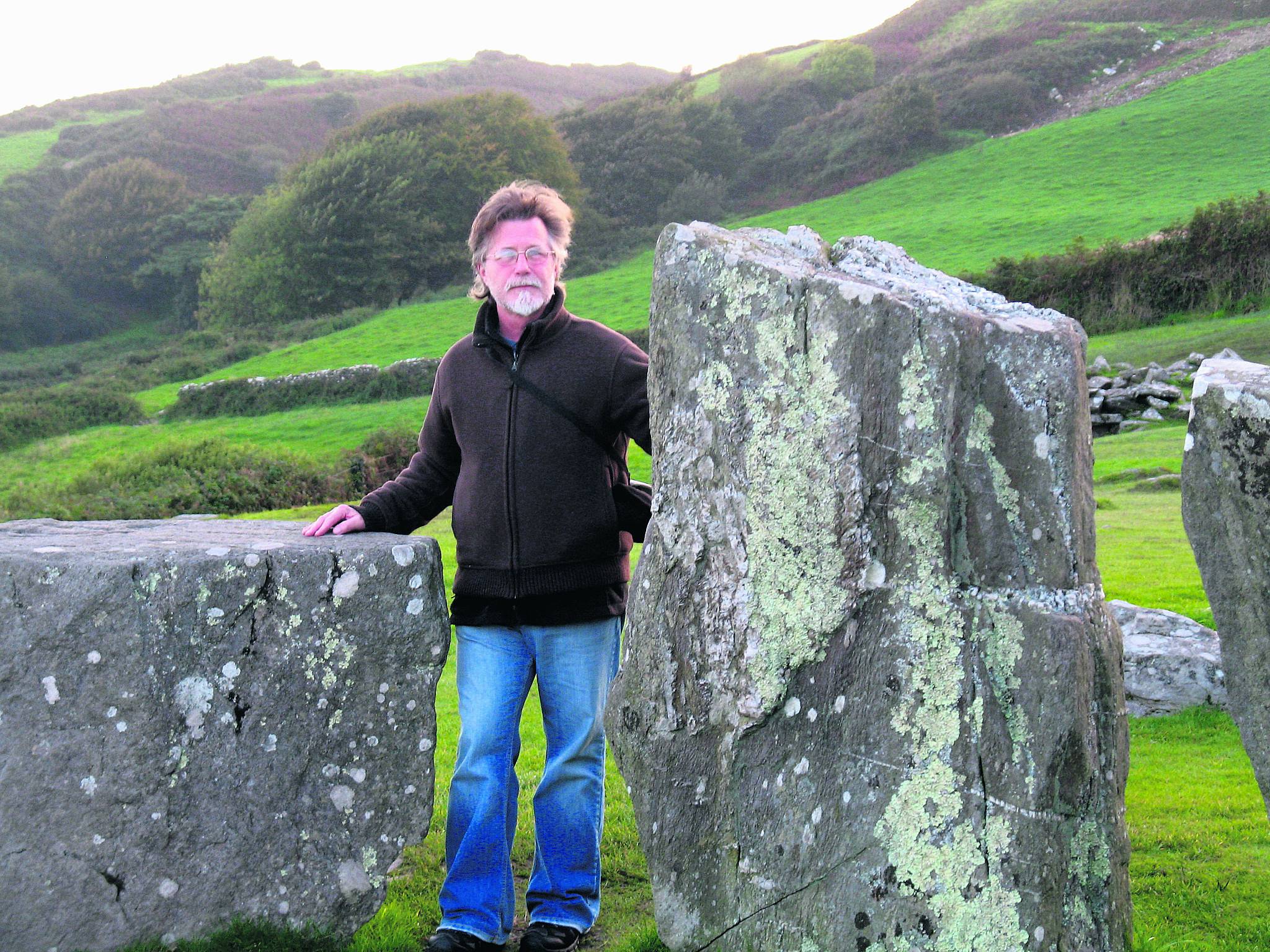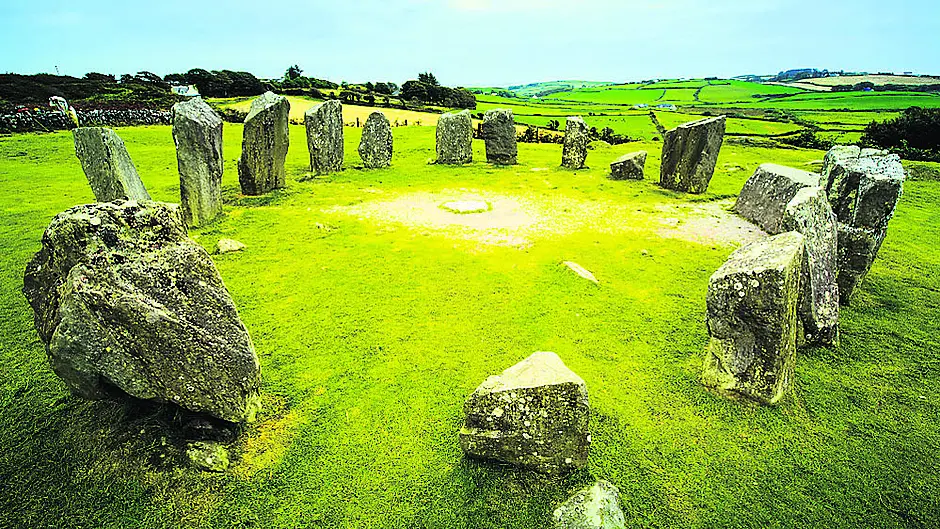With the spring equinox taking place this Thursday (March 21st), Mary McCarthy spoke to author Ronan Murray about the incredible significance of the Drombeg Stone Circle near Glandore, which he has been researching for the past 15 years, unearthing invaluable insights into the fascinating cultural location.
 Ronan Murray.
Ronan Murray.
ONE of West Cork’s most visited cultural locations is the stone circle at Drombeg, above the village of Glandore. But few who visit it will ever know the real significance of this incredible structure.
Located in the townland of Cregg, two miles from Glandore, this historical monument is understood to trace back to around 1,000 BC, marking the late Bronze Age in Ireland.
‘It consists of 17 stones in a stone circle that surrounds a recumbent altar stone,’ according to Ronan Murray, author of Secrets of Drombeg: The Stone Circle and Fulacht Fiadh, who lives in Ardfield and worked as a draftsman in civil engineering.
 Located in the townland of Cregg, two miles from Glandore, this historical monument is understood to trace back to around 1,000 BC.
Located in the townland of Cregg, two miles from Glandore, this historical monument is understood to trace back to around 1,000 BC.
‘What makes Drombeg so interesting this spring equinox is that it defines the true east to the true north of the earth’s polar axis within the stone circle,’ Ronan explained.
‘Drombeg’s true east is defined by the sunrise on the morning of the March 21st. Not only does it align in the stone circle, but it also defines the alignment of the two upper huts, with the connecting hallway.’
After 15 years of onsite research, Ronan discovered that the equinox sunrise, including the two outlier ‘heel’ stones, defines the polar-equinox axis.
The heel stones, particularly, have pointed tops to ensure their accuracy.
Not only does this annual equinox sunrise alignment define the midpoint of the solar year, but at Drombeg by using the ‘heel’ stone, they defined and recorded the moon’s 18.6-year cycle on September 9th, 2014, when the spring sunrise and autumn equinox full moonrise aligned.
Additionally, Ronan found that our ancestors possessed a profound knowledge of land surveying, turning angles, and laying out alignments.
They understood the celestial sky. What defines the stone circle so clearly is the solstice axis between summer and winter found at the ‘recumbent’ stone.
They connected the summer sunrise of the longest day of the solar year to the sunset of the longest night in winter, using the recumbent stone as an axis.
At the summer solstice, sunrise goes straight to the well. The winter sunset goes between the portal stones to the V notch in the western hillside.
Across the Drombeg site, there are two upper huts and one lower hut.
The lower hut contains the sacred well, the Fulach Fiadh, and the fire pit. And both the well and the Fulach Fiadh are aligned to the polar axis, the North Star.
Just as they align true north in the stone circle, they also align true north through the well and Fulach Fiadh, and to a small secondary well.
There are two water systems present. The sacred well is fed by spring water. The other system is fed by groundwater that is channelled under the Fulach Fiadh.
To the ancients, life was about more, and they paid attention to the spiritual. Drombeg Stone Circle connects to the sun god, who ruled the fire of the sky.
The well links to the moon goddess, who ruled the waters of the earth. The entire site represents the joining of the sun and moon with the elements of fire and water.
It also shows a connection between the basic elements of life: earth, fire, air, and water. In the Fulach Fiadh, they joined the elements of water and fire by heating stones in the fire pit and rolling them into the water of the Fulach Fiadh.
‘The level of sacred geometry at Drombeg is as important as Newgrange,’ Ronan believes.
‘The level of sophistication found in their numerals and mathematics is associated with their surveying angles and the cycles of the solar year, including the phases and lunations of the moon. This invites us to re-examine our understanding of what the Bronze Age Irish were capable of 3,000 years ago.’
Ronan says Drombeg is part of a triad triangle of stone circles that includes Reenascreena and Bohonagh in an 18km surveying traverse.
‘The importance of the three stone circles being connected defines a philosophy of the ancients. This represents the cycle of birth, life, and death,’ he said.
Reenascreena represents birth, possibly by the moat of water surrounding it like a womb.
Drombeg is life and the elements due to the union of earth, fire, air, and water.
And Bohonagh, with its larger stones located on a hilltop, stands for death and the afterlife, representing those who have passed on, having been given back to the gods.








